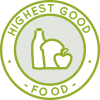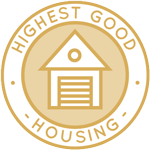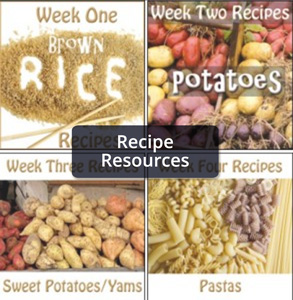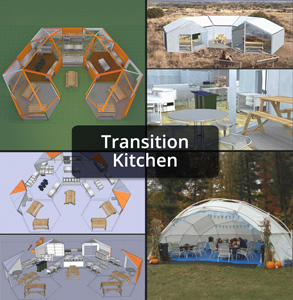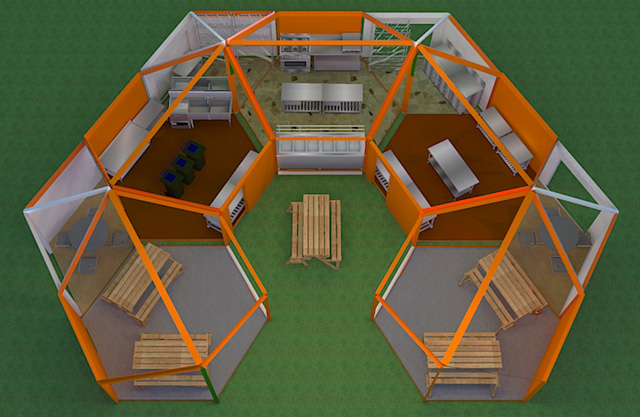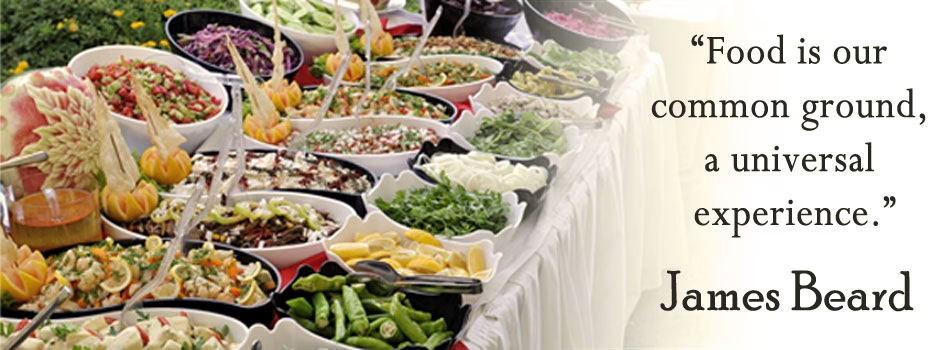
Food Self-sufficiency Transition Plan
Food sustainability and self-sufficiency is becoming increasingly important for a lot of people. This page is a resource and guide for affordably purchasing and deliciously preparing food for groups of 12, 25, 50, and larger while developing the necessary infrastructure to create food independence. For additional food sustainability, diversity, and self-sufficiency resources and guides, visit the Highest Good food open source hub, the soil amendment page, and the hoop house and large-scale garden construction and planting details pages.
This page contains the following sections:
- What is a Food Self-Sufficiency Transition Plan
- Why create a Food Self-Sufficiency Transition Plan
- Ways to Contribute
- Consultants
- Food Self-sufficiency Transition Plan Details
- Choosing Foods to Buy and How to Buy Them
- Production Schedule Overview
- Weekly Shopping and Recipe Links
- Resources
- Summary
- FAQ
RELATED PAGES (click individual icons for complete pages)
CLICK ICONS BELOW TO JOIN US THROUGH SOCIAL MEDIA
WHAT IS A FOOD
SELF-SUFFICIENCY TRANSITION PLAN
 A food self-sufficiency transition plan is purposed to provide a specific road map for groups of 25-50+ people to buy and prepare delicious, healthy, and affordable food while establishing the necessary infrastructure to produce their own food. To meet our open source and maximally adaptable and implementable global transformation goals, this food self-sufficiency transition plan has been created with the following goals:
A food self-sufficiency transition plan is purposed to provide a specific road map for groups of 25-50+ people to buy and prepare delicious, healthy, and affordable food while establishing the necessary infrastructure to produce their own food. To meet our open source and maximally adaptable and implementable global transformation goals, this food self-sufficiency transition plan has been created with the following goals:
- Less than $13 per person per day cost
- Includes both a temporary kitchen and permanent kitchen strategy for food preparation
- To provide a strategy for cooking for a large group that is easily modified and scalable depending on the size of the group
- To provide a meal plan that provides whole-food based flavorful dishes from around the world and caters to both a vegan and omnivore diet
Click these images to be taken directly to the Transition Kitchen and/or the Weekly Recipes:
WHY A FOOD
SELF-SUFFICIENCY TRANSITION PLAN
 This food self-sufficiency transition plan is purposed to be useful for any situation where people are looking to establish a temporary kitchen and prepare food for large groups of people over long periods of time. Most people like the idea of growing their own food but haven’t considered the details of what would be necessary to actually achieve self-sufficiency. As part of our global transformation goals, an open source transition plan that addresses the steps leading to self-sufficiency for sustainable teacher/demonstration communities, villages, and cities is absolutely essential.
This food self-sufficiency transition plan is purposed to be useful for any situation where people are looking to establish a temporary kitchen and prepare food for large groups of people over long periods of time. Most people like the idea of growing their own food but haven’t considered the details of what would be necessary to actually achieve self-sufficiency. As part of our global transformation goals, an open source transition plan that addresses the steps leading to self-sufficiency for sustainable teacher/demonstration communities, villages, and cities is absolutely essential.
WAYS TO CONTRIBUTE TO EVOLVING THIS SUSTAINABILITY COMPONENT WITH US
SUGGESTIONS | CONSULTING | MEMBERSHIP | OTHER OPTIONS
KEY CONSULTANTS TO THE FOOD SELF-SUFFICIENCY TRANSITION PLAN
- Adam Weiss: Kitchen Operations Project Manager
- Ana Flavia Almeida: Architecture and Urban Planning Student
- Benjamin Sessions: Strategic Sales and Real Estate Entrepreneur and Food Connoisseur
- Brian Storz: Culinary Project Manager
- Dr. Matt Marturano: Naturopathic Dr. Developer of the COHERENT Method for Digestive Health
- Olayinka “Yinka” Omole: Recipe Reviewer and Data Entry Assistant
- Rihab Baklouti: Freelance Generalist
- Sandra Sellani: Business Author, Speaker, Consultant, and Vegan Chef
- Shivangi Patel: Graphic Designer
- Zhide Wang: Mechanical Engineer
FOOD SELF-SUFFICIENCY
TRANSITION PLAN DETAILS
There are many details to consider to properly plan and execute a transition strategy to bring a group of people from food dependence that is reliant upon the current traditional model, and one that is completely sustainable. We will prepare food for a group of 50 adults with a combination of vegan and omnivore dietary preferences as we begin building the initial components of One Community.
We discuss the details in the following sections:
- Large-Scale Food Preparation Rollout-Strategy Overview
- Transition Kitchen Design, Setup and Operation Overview
- Sustainable Eating Design Principles and Calculations
- How Much Food is Necessary
- Summary of Needs for 50 Active (Vegan & Omnivore) Adults
LARGE-SCALE FOOD PREPARATION ROLLOUT OVERVIEW
 The overall strategy when planning to cook for an average of 50 people a day should be to establish a fully stocked commercial-sized kitchen. This will provide equipment that will reduce preparation, cooking, and cleaning times. This is especially important in the case of intentional Communities and self-sufficient teacher/demonstration hubs that may rely on volunteer labor to produce meals.
The overall strategy when planning to cook for an average of 50 people a day should be to establish a fully stocked commercial-sized kitchen. This will provide equipment that will reduce preparation, cooking, and cleaning times. This is especially important in the case of intentional Communities and self-sufficient teacher/demonstration hubs that may rely on volunteer labor to produce meals.
The downside to building a fully mechanized kitchen is the initial cost and time to design, purchase, and construct the kitchen. Once established, however, the Community can then rely on a chef and sous-chef to prepare and cook meals, clean the pots and pans, and manage a small support staff for additional preparation help and cleaning the remaining dishes and dining areas. In One Community’s case, these tasks will all fall under the community contribution model for equal and fair engagement (along with other tasks) as agreed upon by consensus.
In the meantime, and in less permanent food preparation situations (like the One Community crowdfunding campaign), a temporary/transition kitchen will be necessary. This kitchen can be outfitted at a minimum with an oven, pots and pans, knives, and a few kitchen utensils to create a setup that has worked for hundreds of years and still works for many home kitchens. This will require more labor though, and a group should expect that a group preparing a large percentage of baked goods and pastas (items that take a considerable amount of time to produce without machinery) will require a chef, sous-chef, and 2 full-time staff-members to prepare the same volume of meals that a fully mechanized kitchen could produce with just a chef and sous chef. Of course, reducing high-labor-investment items like baked goods and pastas can also reduce these kitchen staff needs, so careful menu consideration planning ahead of time is essential to staff planning.
TRANSITION KITCHEN DESIGN AND SETUP OVERVIEW
We have designed our transition kitchen to be affordable, maximally space efficient, easy to set up, and capable of preparing nutritious food for small groups all the way up to 50+ people. This kitchen is estimated to take a team of 10 people less than a day to set up, will be energy and resource efficient, and will cost less than $30,000. We will continuously update the open source plans and add the complete setup and maintenance details when we build it. Please click the below image of the transition kitchen we plan to build to go to the page with the details and additional images:
SUSTAINABLE EATING DESIGN PRINCIPLES AND CALCULATIONS
The procurement, preparation, and consumption of food will take up a large portion of the group’s financial and temporal resources, and even more so in the beginning. Since there are so many differing opinions and theories about nutrition and diet, it is important to have a set of core principles that govern how decisions will be made with respect to these.
We elected to adopt eight proposed principles to food selection, as suggested by our consultant Dr. Matt Marturano, which can be adapted to suit the needs of any group. The list and explanations for each can be found on our Sustainable Food Nutrition Calculations page.
HOW MUCH FOOD IS NECESSARY
Sustainable nutrition practices require us to continually ask this question, as the answer depends upon the circumstances. It is important to understand that there is no static answer to this question aside from ‘It depends’.
Dr. Matt Marturano has provided guidelines and calculations to show us how much food is necessary. Please see the detailed version of how we got the calculations for One Community on our Sustainable Food Nutrition Calculations page, and see his guide on How to Get All Your Nutrition From Food for a very detailed and useful explanation.
We answered his four main questions that affect how much food is necessary and the answers to them will be used in devising the transitional food strategy for One Community. We will be designing menus with the following needs in mind:
- 50 people between approximately 25 – 65 years of age with a mean estimated weight 178 lbs and height of 70 inches, who will be very active (from physical labor since we will simultaneously be in the preliminary construction phase)
Based on the above estimations, while the pioneer group is in the food transition phase and preliminary construction phase, Dr. Marturano estimates we will need the following on average:
Calories and Protein (Please see the Sustainable Food Nutrition Calculations for more information.):

- Daily per person: ~130 grams of protein and ~2750 calories (Using Mifflin-Jeor equation)
- Daily for 50 people: ~6500 grams of protein and ~137,500 total calories
- Weekly for 50 people: ~45,500 grams of protein (round up to 50,000 grams) and ~965,000 calories per week (rounded up to 1 million as a preliminary target to ensure everyone’s needs are met)
SUMMARY OF NEEDS FOR 50 ACTIVE ADULTS
Based on all of the above, as shown on our Sustainable Food Nutrition Calculations page, here are our final weekly calculations for projected food needs for 50 active adults with a 178 pound average weight and mixed dietary preferences.
40% Omnivore, 30% Vegetarian, 30% Vegan Group of 50 Weekly Plan
- 700 lb vegetables
- 350 lb root vegetables
- 350 lb fruit
- 188 lb [dry] whole grains
- 188 lb [dry] legumes
- 49 lb meats (trimmed)
- 94 lb nuts/seeds
- 70 dozen eggs
- 400 servings dairy
- 21 lb dark leafy greens
CHOOSING FOODS TO BUY AND
HOW TO BUY THEM
Since we are estimating feeding 50 people per day, a bulk foods strategy which takes the nutrition above into account will also need to take price into account. Using current food prices, the following is our educated guess on how often we will be using each type of food. The foods are outlined and detailed in the following sections, which are on our Food Procurement and Storage Plan and Food Bars pages:
- Foundational Foods
- Supplemental Foods
- Food Bars
- Bulk Foods Procurement and Storage
FOUNDATIONAL AND SUPPLEMENTAL FOODS SUMMARY:

Foundational = Most Affordable varieties of:
- Bulk Grains
- Dried Beans and Legumes
- Nuts, Seeds, and Spreads/Butters
- Fresh, Dried, and Frozen Fruits
- Potatoes, Yams and other inexpensive root vegetables
- Seasonal, locally available fresh produce – best bulk rate / ‘ugly’ produce will be the priority
- Squashes/gourds, pumpkins, apples, etc, in season
- Eggs and Dairy – low cost dairy items*
- Lean frozen and/or ground meats that are inexpensive*
- Pasta and Couscous

Supplemental = More expensive and occasionally used varieties of:
- Bulk Grains, Dried Beans and Legumes, Nuts, Seeds, Pastas, Spreads, etc, not listed above
- Fresh meats / more expensive meats and dairy items*
- Canned fish and seafood*
- Dried and Frozen Fruits
*for omnivore meals
BULK DRIED GOODS PANTRY
The four main categories of bulk dried goods are: whole grains, beans/legumes, nuts and seeds, and dried fruits. For each of these categories, we will include three staples and some rotating items.

SUGGESTED INITIAL DRY PANTRY
You can find the details of the breakdown of the needs for our bulk foods on the Food Procurement and Storage Plan page. Here is what the storage needs will look like for six weeks of bulk dried goods and four weeks of basic root vegetables and alliums.
SUMMARY – TOTAL STORAGE FOR ALL BULK DRIED GOODS

To meet our goal of having about six weeks of dried bulk foods on hand, we will need to store about 45 buckets of grains, 30 buckets of legumes, 25 boxes of nuts and seeds, and 28 boxes of dried fruits. The diameter of each bucket is 13.4″ and 17.6″ high, the boxes are 12″ x 12″ x 12″, and the shelving units are 60″W X 14″D X 74″H. In addition, our storage space will have a ceiling height of 96″, which limits the amount that can be stored on the top shelves.
Each shelf could hold 5 buckets (13.4’x 5 buckets=~67″ so the buckets on each end would hang off by under 4″ each) across, and with the ceiling limiting the total height, each row can only store 1 bucket high, so 20 buckets fit on each shelving unit. For the 75 buckets, we need 4 shelving units. Each shelf can hold 5 boxes across and 2 boxes high, so we would need the remainder of the 4th bucket holding unit plus one more to hold 50 boxes, with 3 remaining boxes to be added with something else.
SUMMARY – TOTAL STORAGE FOR ALL ROOT VEGETABLES AND ALLIUMS
Root vegetables include potatoes, sweet potatoes, yams, carrots, turnips, parsnips, celery root, beets, etc. Based on nutritional calculations, One Community will need approximately 32 pounds (lbs) per day of root vegetables and 4 lbs of alliums (such as onions and garlic) daily; and for a six-week supply 1344 lbs of root vegetables and 168 lbs of alliums will be needed. However, these items store best in a dark, cool environment off the ground (away from rodents) and away from any fresh fruits, which off gas. We will likely be in an area that is too warn to store that many for that long, so the following image shows our needs for a 4 week period.

PRODUCTION SCHEDULE OVERVIEW
In order to make the lives of the kitchen staff easier, it is strongly advised that the chef and sous-chef prepare meals and base ingredients days or weeks beforehand. Soups, stocks, and other base ingredients can easily be prepared in advance. These base ingredients offer the most flavor to a meal, but are also the most time intensive for the kitchen staff. Stocks can take a particularly long time to make, but are vital to creating certain delicious and healthy meals.
Meal cooking and preparation will take place every day. The kitchen will prepare meals to be ready by approximately 8am, 12pm, and 6pm.

It will be important to also offer healthy snacks to the Community throughout the day. Due to the projected hours of heavy manual labor, a higher caloric intake will be needed than can be satisfied solely through the primary meal setting. With this in mind, healthy snacks will be prepared and offered in cold and dry containers that can be accessed by anyone at anytime. Examples of this would be large dry containers offering food items such as granola, crackers, and mini-pretzels along with chilled water containers that will provide already-prepared vegetables, fruits, and hard-boiled eggs.
WEEKLY SHOPPING AND RECIPE LIST
To effectively serve the One Community Team, we will create two primary recipe options: omnivore and vegan. Catering to too many varied diets would ultimately be costly and unsustainable. Many meals can flexibly be created from either a vegan or omnivore based meal plan. Our current menus are primarily vegan as they were created by Sandra Sellani: Business Author, Speaker, Consultant, and Vegan Chef, and we will be adding omnivore recipes soon. With this (and all the information above) in mind, we have created the following first draft of weekly recipe lists:
RESOURCES
- How to Get All Your Nutrition From Food
- Dietary Reference Intakes as maintained by the United States Institute of Medicines
- Long term storage techniques
SUMMARY
 Our food self-sufficiency transition plan is purposed to provide a specific road map for groups of 25-50+ people to buy and prepare delicious, healthy, and affordable food for under $13/person per day while establishing the necessary infrastructure to produce their own food. With this in mind, we focused on calculating the macro nutrient ratios and caloric needs for the pioneer team of 50 that will be on the property by calculating needs for our current group and multiplying it so it covers 50 people. We then created a bulk food storage strategy to provide the basic needs for the macro nutrients when combined with basic fresh staples purchased on a weekly basis. We also created sets of weekly menus that could be used to provide both variety and nutrition.
Our food self-sufficiency transition plan is purposed to provide a specific road map for groups of 25-50+ people to buy and prepare delicious, healthy, and affordable food for under $13/person per day while establishing the necessary infrastructure to produce their own food. With this in mind, we focused on calculating the macro nutrient ratios and caloric needs for the pioneer team of 50 that will be on the property by calculating needs for our current group and multiplying it so it covers 50 people. We then created a bulk food storage strategy to provide the basic needs for the macro nutrients when combined with basic fresh staples purchased on a weekly basis. We also created sets of weekly menus that could be used to provide both variety and nutrition.
FREQUENTLY ANSWERED QUESTIONS
Q: How can you be sure your food ratios are correct?
A: Although much research has been done, we can not be sure that this is going to be the most versatile and complete list that will accommodate the needs and preferences of our team until we are on the property, understand the preferences of each individual, and see how each person’s caloric intake is affected by the labor they engage in. The ratios and items will be adjusted based on these needs, consensus, and the sources and costs of the particular foods that we can access from the property.
Q: Why are so many of the recipes vegan?
A: The vast majority of the preliminary recipes were donated by a vegan chef. We will create omnivore based recipes as well, specifically for the transition kitchen plans, which we anticipate will be used by an even broader audience than just our pioneer team.
WHO WE ARE
MAIN OPEN SOURCE HUBS
KEY FOOD COMPONENTS
- OS Hub
- Grow
- Build
- Ethical, Humane, & Conscientious Goat Stewardship
- Ethical, Humane, & Conscientious Rabbit Stewardship
- Ethical, Humane, & Conscientious Chicken Stewardship
- Food Forest
- Hoop Houses
- Apiary/Bee Yard
- Botanical Garden Creation & Inventorying
- Conscientious Wildlife Stewardship and Habitat Development
- Large-scale Gardening
- Soil Amendment & Site Preparation
 One Community
One Community